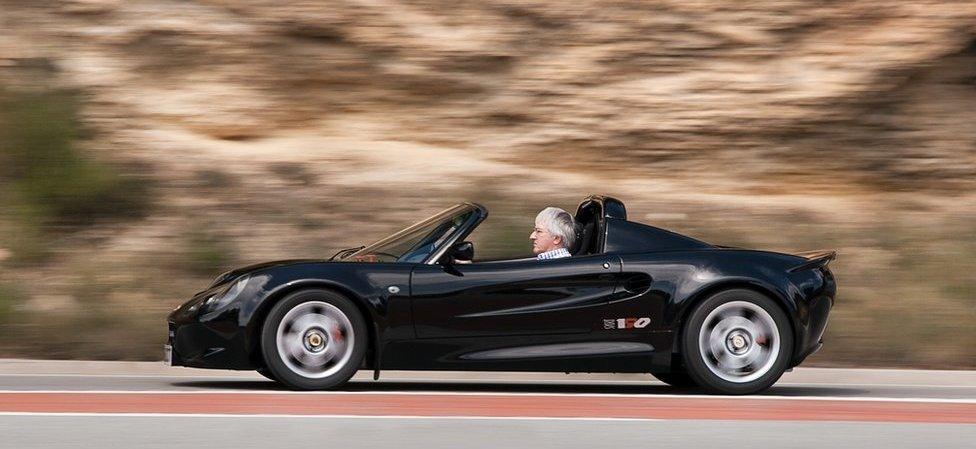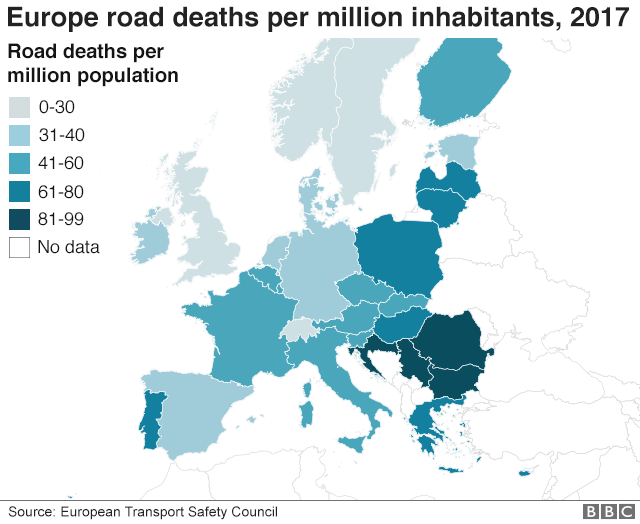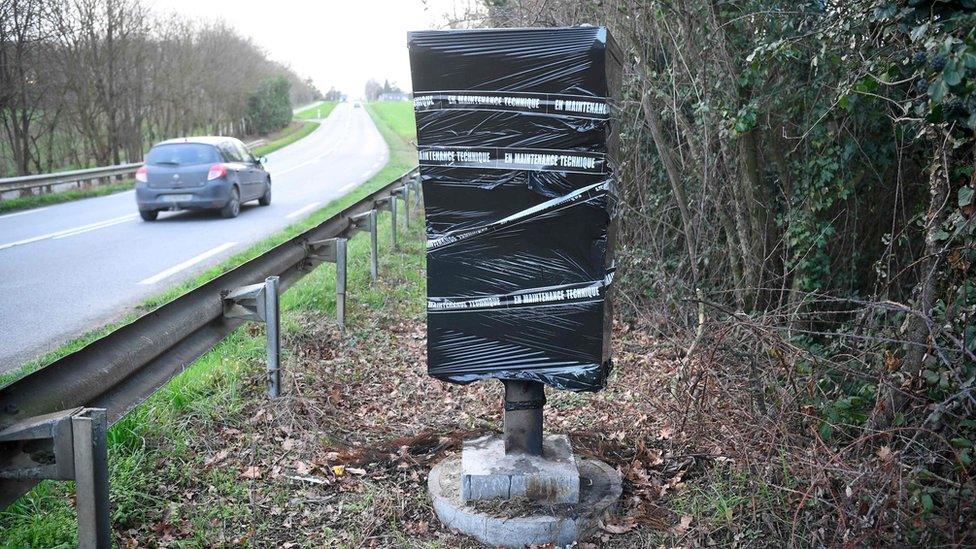Europe changes gear over speed limits on country roads
- Published

Spain is among several EU countries reassessing speed limits on country roads
Spain has reduced the speed limit on major rural roads to 90km/h (56mph), from 100km/h.
The measure took effect on Tuesday, after the authorities changed more than 2,700 road signs at a cost of €526,000 (£457,000; $602,000).
The aim is to get into the safest group of EU countries for rural drivers: below 30 deaths per million people.
In Germany, meanwhile, the government has resisted pressure to introduce a speed limit on motorways (Autobahnen).
The argument in Germany centres mainly on fine-particle exhaust pollution and CO2 emissions, which increase at higher speeds.
But cutting road accident deaths is also part of the debate in Germany.
What is changing in Spain?
The new 90km/h limit applies to major rural roads, which are described in Spanish as "conventional or secondary roads".
In the past five years, Spanish RTVE news reports, they accounted for up to 80% of fatal road accidents.
The death toll on such roads in 2018 was 877. In 40% of fatal accidents one or more vehicles had swung out of its lane, and 27% involved head-on collisions.
The government aims to get the number of deaths below the 39-per-million figure that Spain registered in 2017.
Data for 2017 from the EU's European Transport Safety Council shows that road deaths were lowest in Sweden and the UK, per million inhabitants.


What about France?
The French government's decision last year to cut the speed limit on country roads by 10km/h - to 80km/h - was a major factor in the rise of the "gilets jaunes" (yellow vests) protest movement.
Many inhabitants of rural France saw the move as an example of President Emmanuel Macron's urban elitism - a failure to understand the needs of rural folk totally reliant on their cars.

Thousands of French speed cameras like this have been vandalised during yellow-vest protests
On Monday France's Prime Minister Edouard Philippe said 116 fewer people had been killed on roads where the speed limit had been cut to 80km/h.
Speaking in the town of Coubert, just south of Paris, he said the total number of fatalities on French roads had reached a historic low of 3,259 last year, "189 fewer than in 2017".
The move was also part of Mr Macron's push to cut France's emissions of greenhouse gases.
What are the UK's speed limits?
The UK limit is 60mph (96km/h) for cars on rural roads corresponding to those in France and Spain.
But on dual carriageways - with a central reservation - and motorways the UK limit is 70mph (112km/h).


Fun, fun, fun on the Autobahn?
Germany remains the exception in the EU in having no speed limit on its Autobahnen.
Chancellor Angela Merkel's spokesman, Steffen Seibert, rejected a proposed 130km/h speed limit on Germany's famous motorways.
"There are more intelligent measures for climate protection in the transport sector," he said.
A transport committee will put forward proposals next month for reducing pollution from vehicles.

Many German drivers cherish their freedom on the Autobahn
Resistance to an Autobahn speed limit remains strong, especially in the powerful car lobby. For decades high-performance cars, such as Audis and BMWs, have played a big role in Germany's export prowess.
But a survey last week for broadcaster ARD suggested 51% of Germans favouring a 130km/h Autobahn limit, and 47% against.
Environmental Action Germany (DUH), a campaign group, argues that such a limit would cut annual CO2 emissions by 5m tonnes.
The scandal over Volkswagen's diesel emissions has given the climate campaigners extra leverage. VW was found to have sold more than 10 million cars with emissions-test cheating software installed, from 2007 to 2015.


Tensions in Austria
In neighbouring Austria there is heated debate over Transport Minister Norbert Hofer's pilot scheme to raise the Autobahn speed limit to 140km/h, from the current 130km/h.
Emissions are being measured on two Autobahn sections, and he plans to expand the pilot to two-thirds of Austria's motorways.
He is a member of the far-right Freedom Party, and political rivals have strongly criticised his pilot scheme.
Among them is Environment Minister Elisabeth Köstinger, who says Mr Hofer's ministry has the target of cutting CO2 emissions by at least 7.2m tonnes by 2030.